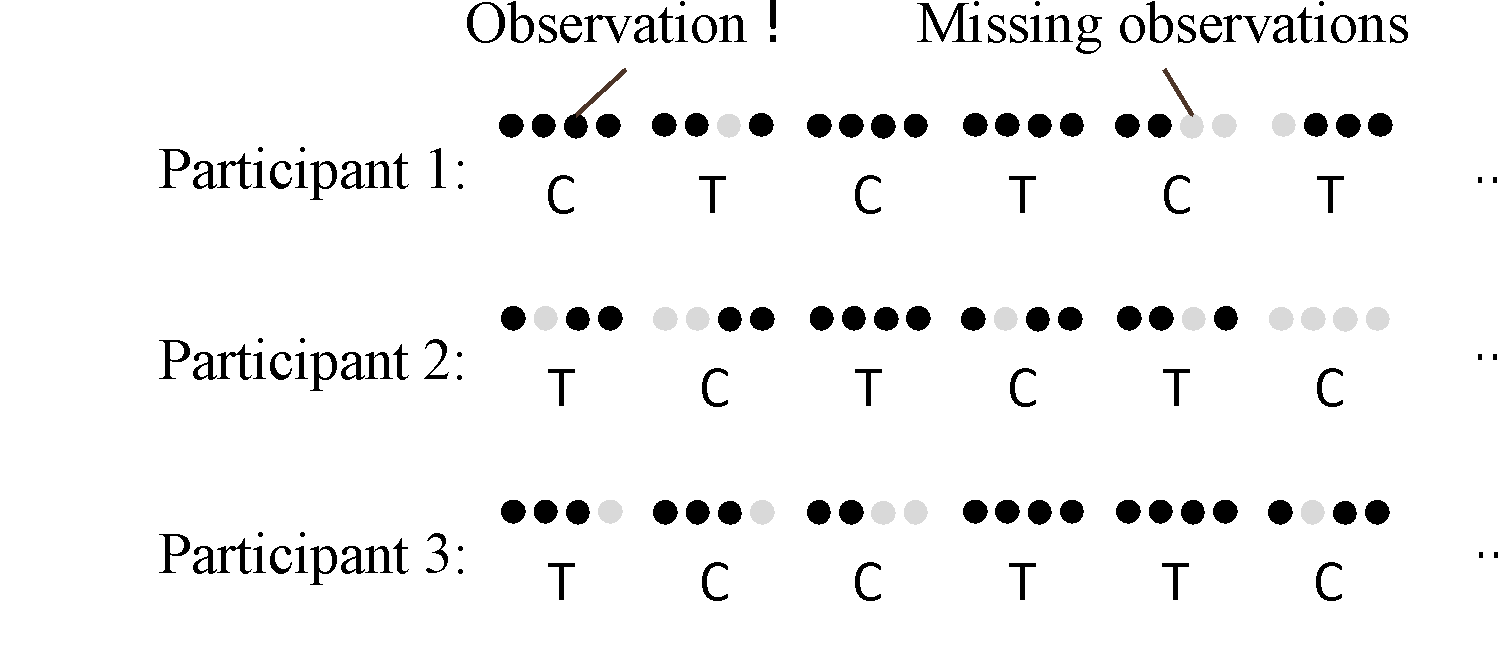Back to: N-of-1 Trials: A scientist in your back pocket
Here’s a typical example of an N-of-1 trial, where “T” stands for treatment and “C” stands for control, which is another way of saying going back to the participant’s normal behavior. You’ll see that each person participating in this N-of-1 trial experiences a different pattern of times when they’re receiving the treatment or not receiving the treatment.

Each dot represents an observation- a time when the trial is collecting data about the participant’s experience.
This illustration shows that sometimes those observations didn’t get collected. Those are the white dots, labeled “missing observations.” This happens when maybe the participant forgot to reply to a prompt or didn’t feel like plugging the data into their phone on that day.
After the trial, researchers compare the outcomes collected in the treatment (T) periods with the outcomes collected in the control (C) periods to reach conclusions about the effectiveness of the treatment versus doing nothing.